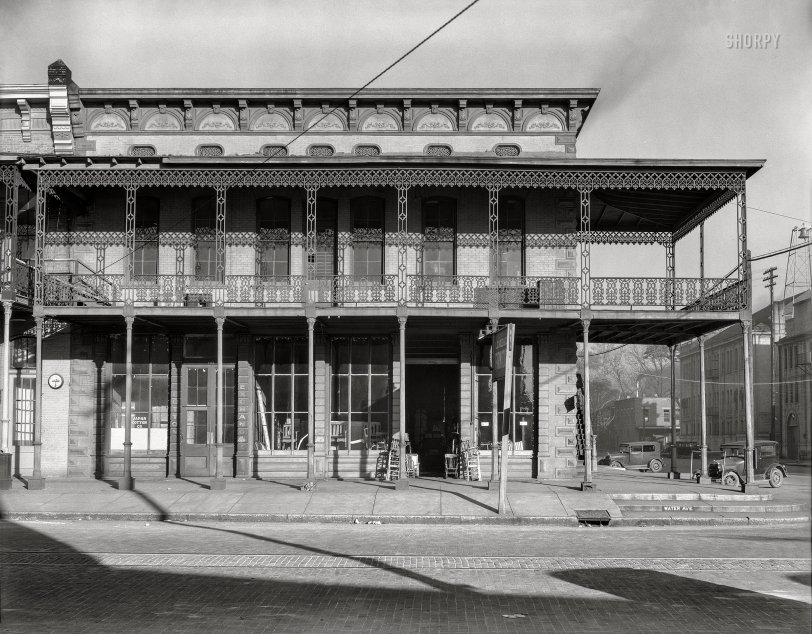


Framed or unframed, desk size to sofa size, printed by us in Arizona and Alabama since 2007. Explore now.
Shorpy is funded by you. Patreon contributors get an ad-free experience.
Learn more.

- Roll your own
- Rugged and real!
- A Charles Purcell - Mama Cass Connection
- Uncle SAAM
- Obfuscation
- One Chocolate Soldier rode away
- Victor Marquis de la Roche
- The Little House Across Way ...
- Vanderbilt Gates
- Vanderbilt Mansion
- You can still see that gate
- Withering heights for me
- So Jim,
- Top Heavy
- Re: Can't Place It.
- Bus ID
- Since you mention it
- The White Pages ?
- Moonlight Tower
- 1907?
- Fire(men) and Water
- Can't Place It
- Can anyone
- Wings
- Where's Claudette and Clark?
- Overbuilt Rolodex
- One song
- Give Me Wings Please!
- PRR
- Pinball Wizards
Printporium
Water Avenue: 1935

December 1935. "Main street architecture. Selma, Alabama." Premises of the Cotton Exchange and L.C. Adler & Co. furniture store. Note the fire bell tower at right. 8x10 inch nitrate negative by Walker Evans for the U.S. Resettlement Administration. View full size.
I just knew ...
... this was a Walker Evans photograph before reading the caption.
[Taken almost 90 years ago, but digitized and made available online by the Library of Congress only last fall. - Dave]
Someone stole my balconies
Please bring them back!
The building (1225 Water Avenue) is still extant, and, up until a few years ago (above) looked little different than in 1935. The most recent Street Views show the ironwork missing. Hopefully they just sent it out to be cleaned.
The historical survey of the building is rather brief: "1223-5 Water Ave. c 1860-70. Italianate. Two-story, two-bay brick two-part commercial block ... Cast iron quoins."
Still there, maybe
If the recent tornado that ravished the Selma area missed this old building then it is still there.
[You haven't been ravished until you've been ravished by a tornado. - Dave]
Architecture/geography coincidence
When I opened Shorpy just now, this was the first image on the top and I said to myself "nice photo of New Orleans French Quarter", then quickly read that it is instead Selma, Alabama. Then, I scrolled down to the next photo, and it's New Orleans! And on top of that, I wouldn't have guessed it by looking.
Head bangers
Those low hanging light bulbs in the furniture store appear to be ... low hanging. You would think any one of those chairs they're selling would give a person some extra height so they could change a burned out bulb.
Period architectural details
It's interesting to see the quoins (corner blocks/stones) on the brick building. It's hard to see in the shadows, but it looks like arched windows on the second story. The ventilator grilles above each window are an interesting Southern architecture touch. What's not clear to me is the window/door header on the ground floor above the row of doors/windows. There might be arches hidden behind the porch, or this might have a iron/steel beam as a header. If the latter, I'd tend to date this to early 20th century, if the former, then earlier. And if later, the quoins and similar detail along the ground floor doors could be cast concrete, rather than stone. The porch posts are most likely cast iron.
I hope someone has some more history on this building.

























On Shorpy:
Today’s Top 5